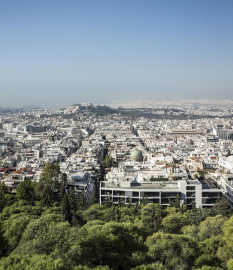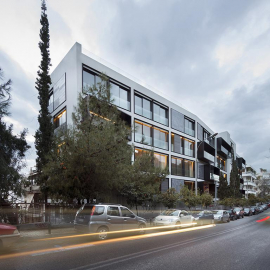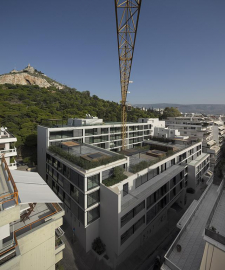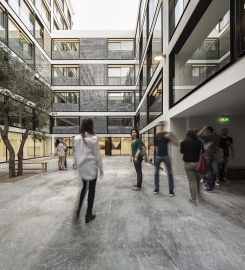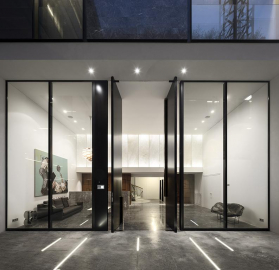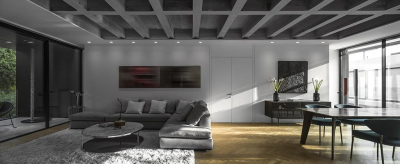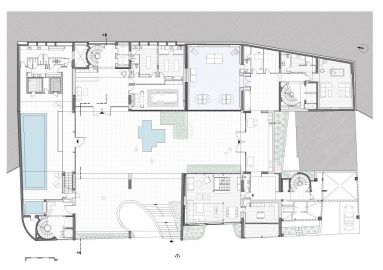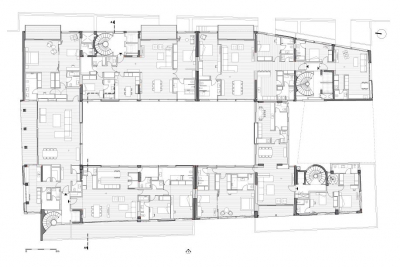Conversion of Doxiadis Office Building-ATI to Apartment Building
In a state of abandonment and decay during the last 20 years, the Doxiadis office building, an icon of Greek post-war modern architecture in Athens, finally comes back to life through its successful conversion into a residential building, perched on Lycabettus hill offering unique views to the Acropolis.
This conversion, within a particularly dynamic environment in the midst of a national financial and social crisis, tackles crucial questions about memory, preservation, integration into natural and built environments and innovation inspired by the potential of existing spaces.
These ideas were inherently integrated into the existing building by Constantinos Doxiadis, the internationally acclaimed architect & urban planner who originally designed the building in 1957, to house his offices and the Doxiadis School of Technicians.
The design strategy identifies the core values of the building, such as the articulation of the volumes around a central atrium, and by defining memory as a dynamic process rather than a static condition, moves away from sterile facade preservation (façadism) and sets out to reconnect the building with its surroundings, highlight its remaining original architectural features and recreate a community, in respect to the building s history and Doxiadis visionary ideas.
Specifically, the atrium, along with the original construction grid and the escalating volumes following the sloping site organised around it, were preserved. The facade s original module was transformed into a three-component pixellated surface, consisting of glass, translucent concrete and marble panels -one of the materials originally used in the atrium and public spaces. Each pixel produces spatial effects according to programme and location within the building. Through the diffusion of light and casting of shadows it regulates privacy with the revelation or partial concealment of the views to Mount Lycabettus and the Acropolis.
The ribbed concrete ceilings in the living rooms of the apartments were exposed and restored, to reveal Doxiadis technology of construction achievement. The herringbone pattern timber floor and marble cladding in the bathrooms, refer to the golden age of Athenian 1960-70s apartment buildings.
The ground level communal areas (indoor pool, gym, meeting room, creche) are distributed around the atrium, reinforcing its function as the core as well as the transition point between the apartments and the city. With its marble floor and reflective water surface, it is central to creating a community, typical of housing complexes of the Modern Movement. The ground floor will house a permanent exhibition honouring the work of Constantinos Doxiadis.
The main sustainable principles, originally applied by Doxiadis when he designed the building, such as a layout which had its volumes distributed around an atrium and using local materials and construction methods, were successfully enhanced and adopted for the conversion, even with a different program from its original design.
To do so and extend the cradle to grave span of the building, and in collaboration with the Central Council of Contemporary Monuments, the building layout was preserved and the residencies were designed as dual aspect spaces to ensure that they received natural light and ventilation. Solar shading for the south facade was dealt with by integrating discreetly detailed external vertical blinds.
Secondly, by restoring the structural concrete grid, thus reducing the building s carbon footprint; and finally, by preserving original architectural features such as four marble spiral staircases, along with the ribbed reinforced concrete ceilings; the latter revived by a locally specialised craftsman. The atrium s locally sourced grey Aliveri marble floor and water feature have been conserved and reiterated within the atrium facade, itself a modified iteration of the original modular system.

